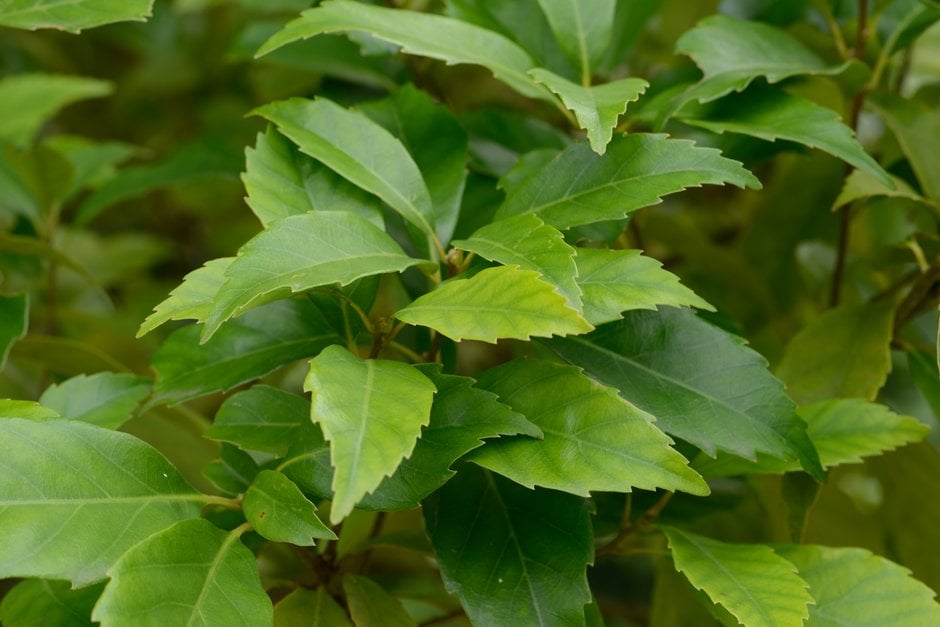Quercus glauca
Japanese blue oak
A medium-sized, evergreen tree or, more often, a large, bushy shrub. The thick, leathery foliage is dark green above, blue green below, and may have bronze or purple tones when young. Inconspicuous catkins in spring are followed by 2cm-long acorns
Size
Ultimate height
8–12 metresTime to ultimate height
20–50 yearsUltimate spread
4–8 metresGrowing conditions
Moisture
Moist but well–drained, Well–drainedpH
Acid, NeutralColour & scent
| Stem | Flower | Foliage | Fruit | |
| Spring | Green Yellow | Bronze Purple Green Blue | ||
|---|---|---|---|---|
| Summer | Bronze Purple Green Blue | |||
| Autumn | Green Blue | |||
| Winter | Green Blue |
Position
- Full sun
Aspect
East–facing or South–facing or North–facing or West–facing
Exposure
Sheltered Hardiness
H4Botanical details
- Family
- Fagaceae
- Native to GB / Ireland
- No
- Foliage
- Evergreen
- Habit
- Bushy
- Potentially harmful
- Pets (dogs): Harmful if eaten - for further information and contact numbers regarding pets, see the HTA guide to potentially harmful plants
- Genus
Quercus can be deciduous or evergreen trees or shrubs, with entire, lobed or toothed leaves; flowers inconspicuous, followed by characteristic acorns; sometimes good autumn colour
- Name status
Correct
- Plant range
- Japan, China
How to grow
Cultivation
Grow in deep, fertile, well-drained soil in full sun, with shelter from cold winds and late frosts
Propagation
Propagate by seed sown in a coldframe or seedbed as soon as ripe or by grafting in mid-autumn or late winter
Suggested planting locations and garden types
- Architectural
- Low Maintenance
Pruning
Pests
May be susceptible to oak processionary moth, aphids, caterpillars, leaf-mining moths and oak gall wasps
Diseases
May be susceptible to powdery mildews and honey fungus
Get involved
The Royal Horticultural Society is the UK’s leading gardening charity. We aim to enrich everyone’s life through plants, and make the UK a greener and more beautiful place.

